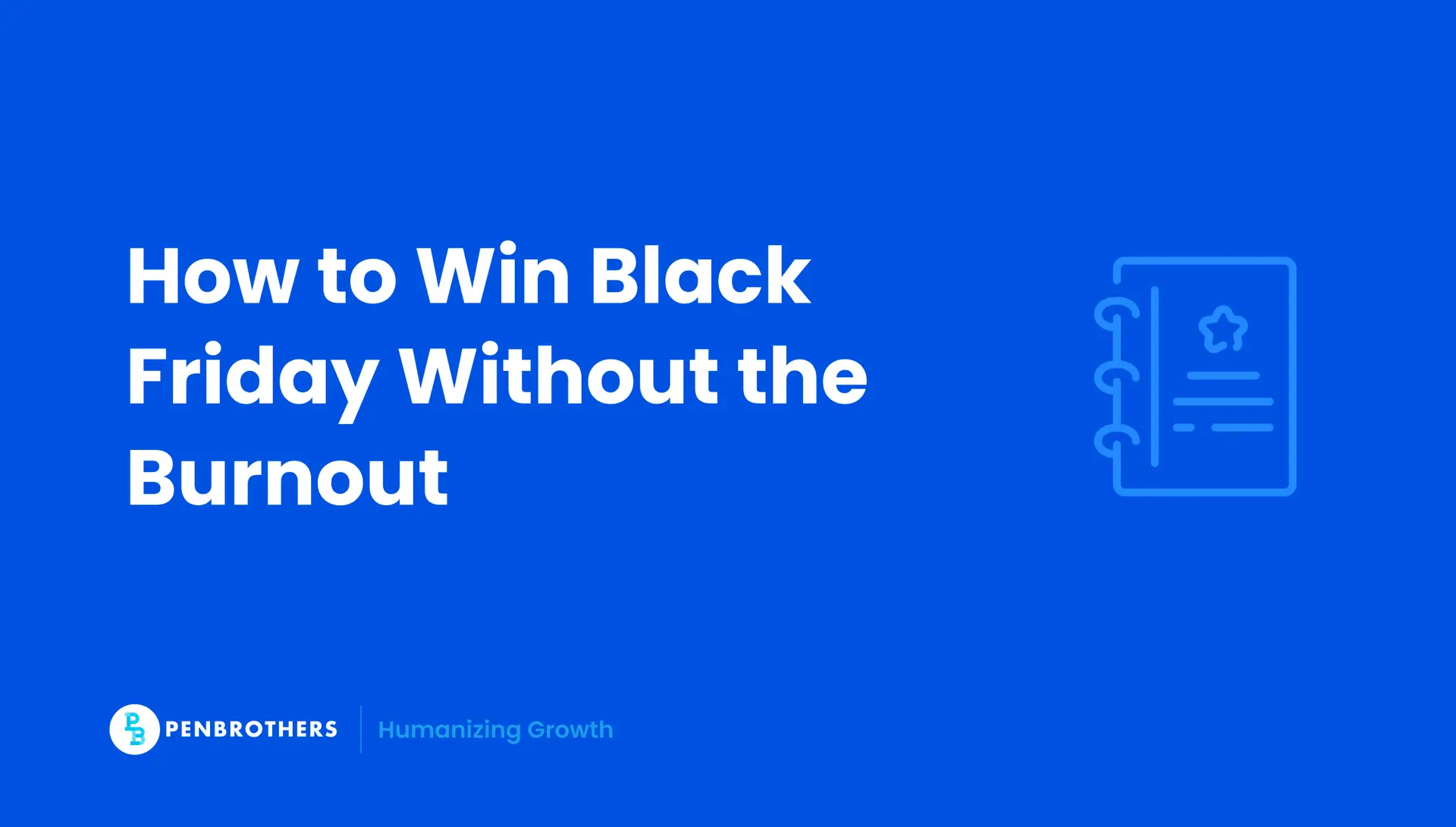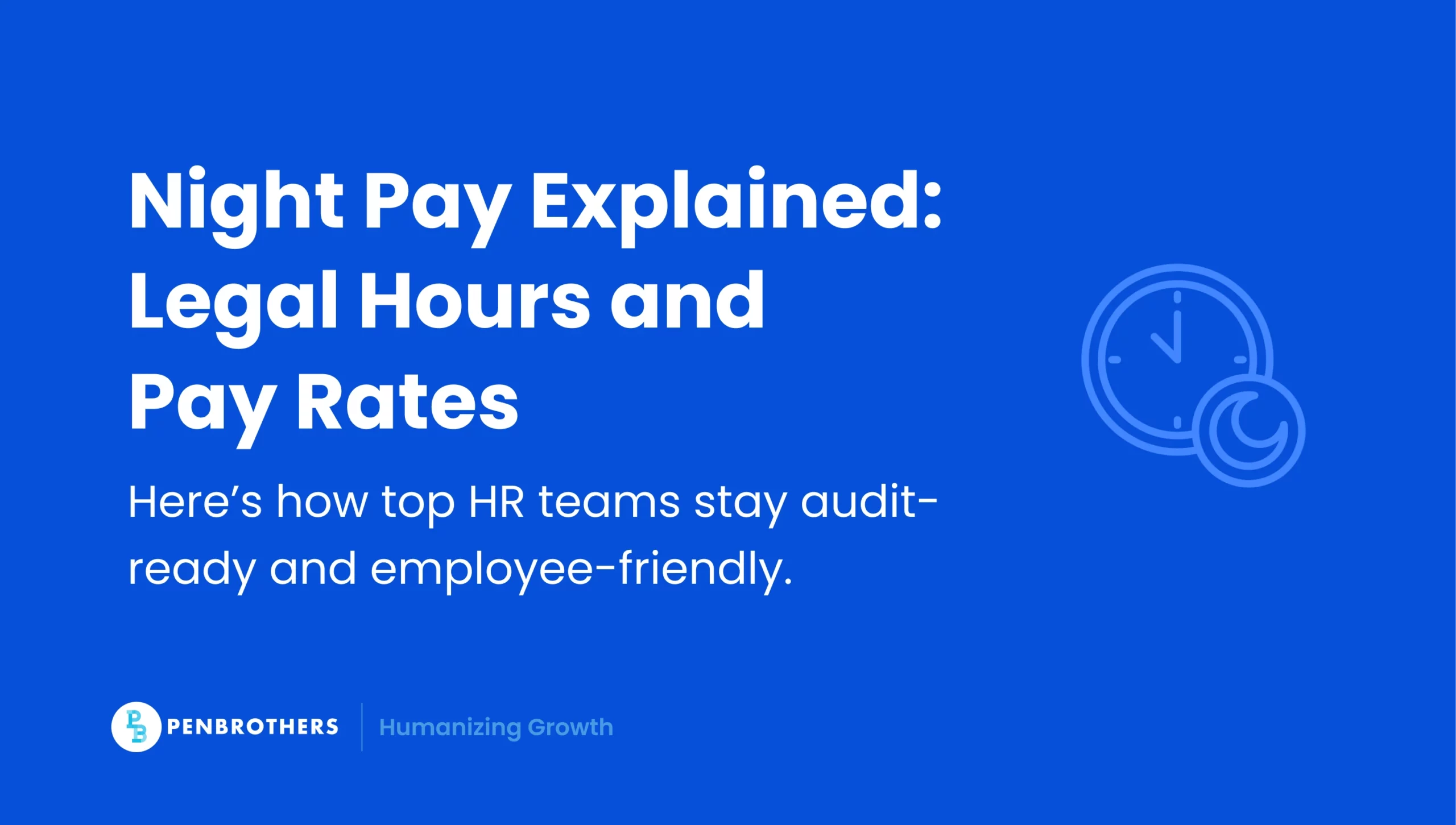What's Inside?
Black Friday Playbook: Scale Without Burning Out Your Team

Key Takeaways
- People before performance. Black Friday isn’t just a sales marathon — it’s an emotional and operational stress test. Sustainable success starts with protecting your team, not pushing them harder.
- Guardrails beat heroics. Quiet hours, structured rest, and empathy training turn chaos into calm. The best-performing CX teams plan for recovery as carefully as revenue.
- Automate the grind, not the gratitude. Smart automation clears repetitive tasks so agents can focus on the human moments that drive loyalty and lifetime value.
- Offshore to outlast. Offshore CX teams offer surge coverage, empathy at scale, and cost stability, helping brands handle peak seasons without breaking people or processes.
- Measure beyond sales. Post-Black Friday success is defined by retention, morale, and operational health because a team that survives December can scale all year.
Every November, brands chase record-breaking sales. But behind the dashboards and discount codes, there’s another story: teams working around the clock, inboxes exploding, and customer experience (CX) reps barely holding it together.
As Eli Weiss of Yotpo often points out, the real challenge of BFCM isn’t just traffic or ticket volume, it’s the emotional and operational burnout that follows if your systems and people aren’t ready. The reality is that many teams survive Q4 instead of scaling through it. Success stories often mask the exhaustion that follows, where high-performing CX agents quit in December and operations leaders spend January rebuilding what broke.
The question isn’t “Can your systems handle Black Friday?”
It’s “Can your people?”
The Pressure Behind the Promotions
Black Friday isn’t just a marketing event, it’s an operational stress test.
Meanwhile, Deloitte’s 2024 Holiday Retail Survey reports that holiday spending is expected to grow by 8% year over year, with nearly 79% of consumers planning to shop online, yet only about one-third of retailers say they’re expanding staffing or operational capacity to meet the surge.
The result?
Support teams stretched thin, operations running hot, and decision fatigue peaking.
Customer expectations are also rising. According to HubSpot’s Customer Service Report 2023, 90% of customers rate an “immediate” response as important or very important when seeking support.
And yet, brands keep pushing for faster responses, bigger discounts, and “heroic” effort, all while losing sight of sustainability.
Rethink “Winning” Black Friday
If your team dreads Q4, your playbook is broken.
“Winning” Black Friday shouldn’t be defined by discounts, ticket volume, or hours logged. Eli Weiss advocates for a “burnout-free BFCM”, where success is measured by:
- Stable systems and predictable workflows
- Fast, empathetic CX at scale
- Teams that end December proud, not depleted
In other words, scale is only meaningful when it’s sustainable.
Leaders who understand this shift redefine success around operational calm and customer trust, not chaos. Because the real ROI of a smooth Black Friday isn’t just sales. It’s retention: of customers, employees, and sanity.
Step 1: Build Guardrails Before the Rush
Before promotions go live, set the tone for how your team will operate under pressure.
Create quiet hours.
Even during the busiest weekend, structure coverage so that agents and managers have uninterrupted rest blocks. Burnout starts when boundaries disappear.
Train fast empathy.
Teach agents to write concise, human messages that convey care without long scripts. Example: “Got it, I’ve fixed that for you!” does more than a paragraph-long template.
Schedule rest as a deliverable.
Include recovery time in your launch plan just like you would a campaign deadline. Rest is not a reward after the storm, it’s part of the strategy.
A balanced CX calendar is a competitive advantage. It lets your team sustain six intense weeks, not just one.
If you’re looking to reinforce your CX backbone early, outsourcing customer service to enhance brand loyalty can give your core team breathing room while maintaining responsiveness and quality.
Step 2: Automate the Grind, Keep the Meaning
Burnout often comes from repetitive, low-value work, not from helping customers.
Automate what drains energy but preserve what drives connection.
Automate the repetitive:
- Order lookups
- Returns and refund confirmations
- Address or shipping changes
Tools like Gorgias or Zendesk can handle these in seconds. Free your agents to focus on “human saves”, resolving complex or emotional issues that AI can’t handle.
Keep the meaning:
Assign high-skill reps to personalized retention and VIP recovery. That’s where human empathy drives loyalty.
As Eli Weiss notes, “Automation should make room for humanity, not replace it.”
Need help finding people who can balance empathy and efficiency? Learn how to hire a customer experience specialist who can thrive in this environment or augment your team with trained remote CX talent from Penbrothers.
Step 3: Design Smart Offers, Not Bigger Discounts
Bigger discounts don’t always mean better outcomes. They erode margins and spike ticket volumes when customers rush to fix order errors or chase refunds.
Behavior-triggered rewards are reported to convert better and create less operational friction than blanket deep discounts
Instead of slashing prices across the board, use time-sensitive micro-rewards:
- “Checkout in 15 minutes → $10 off next purchase”
- “Spend $100 → automatic gift card for future use”
These create urgency without devaluing your product or overwhelming your team with manual requests.
Sustainable incentives protect both your brand integrity and team morale. They also make your promotions easier to manage through automation and predictable workflows.
Step 3.5: Extend Capacity with Offshore Talent
Even with the best systems, no in-house team can scale infinitely.
That’s why many founders now use offshore support teams to handle the Black Friday–Cyber Monday surge without sacrificing well-being or quality.
Here’s how it works in practice:
- Surge coverage without burnout. Offshore professionals in markets like the Philippines can manage after-hours or overflow queues, allowing your core team to rest while customers still get instant responses.
- Quality and empathy at scale. When properly trained, offshore CX specialists provide the same brand voice and empathy your customers expect. The key is integrating them early into your workflows, not treating them as a last-minute fix.
- Operational resilience. Distributed teams create built-in redundancy. If your local support center is overloaded, offshore agents keep response times steady and SLAs intact.
- Cost efficiency. Instead of over-hiring short-term temps, you build an extended team that stays with your brand year-round and ramps up seasonally when needed.
A number of high-growth ecommerce companies now treat offshore teams as a strategic capacity buffer, a way to scale sustainably during peaks while protecting their culture from exhaustion.
If you’re exploring this route, outsourcing customer service to enhance brand loyalty or partnering with outsourcing consultants can help you build an offshore model designed for long-term success.
Step 4: Pre-Load Systems and Playbooks
October is your “hardening month.” That’s when top-performing brands stress-test their systems before Black Friday hits.
Checklist for “October Hardening” includes:
- Fixing macros and canned responses
- Cleaning automation rules and tags
- Segmenting VIPs for proactive outreach
- Running internal simulations for traffic spikes
Complement this with operational prep from CX leaders on Medium:
- Build evergreen landing pages ready for early deals
- Create segmented omnichannel flows (email, SMS, chat)
- Schedule “quiet” campaigns for late November (no last-minute rush)
This ensures your team runs proactively, not reactively.
By the time Black Friday hits, everyone should be in execution mode, not troubleshooting.
If your internal resources are stretched, consider working with outsourcing consultants to optimize workflows or design an offshore support model that scales with seasonal demand.
Step 5: Protect Your People During the Peak
Once the floodgates open, your job shifts from preparation to protection.
Here’s how top teams stay sane and sharp through BFCM:
Rotate shifts every 2–3 hours.
Micro-rotations keep agents fresh and focused. Longer shifts lead to more mistakes and slower resolutions.
Use a war room doc.
Centralize real-time updates, issues, and decisions. This keeps everyone aligned and eliminates endless Slack threads.
Build an exception matrix.
Define quick escalation rules:
- Refund threshold (who approves what)
- Order replacement policies
- Discount overrides
This saves decision time and empowers agents to act fast.
A practical addition: leverage remote customer service jobs to maintain 24/7 coverage without overloading local teams. Offshore CX support can absorb after-hours volume while your core staff recovers.
Step 6: Reward Recovery and Reflection
Your Black Friday strategy isn’t complete until you plan recovery.
Staggered rest.
After Cyber Monday, rotate recovery days so operations never go fully dark but people can truly rest.
Run retros early.
Within a week, run a “3R” retro:
- What broke
- What held
- What to rebuild
Recognize contributions.
Publicly celebrate wins in all-hands meetings. Privately thank those who took the hardest shifts. Retention depends as much on recognition as pay.
Review data holistically.
Beyond sales metrics, analyze support volume, first-response time, and CSAT. Tom’s post-BFCM analysis framework recommends correlating CX metrics with sales outcomes to see where burnout hurt performance.
Your learnings become next year’s advantage and the foundation for a sustainable growth loop.
You can strengthen that loop further by building a resilient offshore structure, start by exploring customer support remote solutions that ensure continuity beyond Q4 surges.
Final Thoughts
Black Friday doesn’t need to be a sprint that leaves your team gasping at the finish line.
The real challenge and opportunity is designing systems that thrive under pressure without breaking people.
Your best Black Friday strategy isn’t just about discounts or ads. It’s about people, processes, and pace.
Because, as one CX leader put it:
“Black Friday is a sprint only if your systems are a marathon.”
So before you launch your next campaign, ask yourself, have you built your stress-proof Black Friday team?
If not, now’s the time. Penbrothers can help you design CX, operations, and support systems that scale sustainably, powered by trained offshore professionals who thrive during peak seasons.
Build your Black Friday strategy on systems, not heroics.
Frequently Asked Questions (FAQs)
Beyond pure revenue, track metrics like first-response time, ticket backlog growth, agent utilization, and cancellation/refund rates. These measures reflect both operational health and the customer experience, helping leaders spot burnout or bottlenecks early rather than only after the fact.
Start by onboarding offshore agents well before the peak — with brand training, role-plays, and shared KPIs — so they operate as a seamless extension of your core team. Also ensure communication channels, hand-off protocols and escalation guidelines are aligned so that quality and tone are consistent.
Automations that handle repetitive, low-value queries (e.g., order status, shipping updates, returns lookup) free skilled agents for meaningful, high-empathy work. However, tasks requiring brand voice, context judgement or emotional intelligence should not be automated — the human connection remains critical for loyalty.
October (or roughly one month ahead) is the ideal window for stress-testing systems, cleaning rules and tags, updating FAQs, and running simulation drills. This gives time to uncover hidden issues while pressure is still moderate, so your team is execution-ready when the surge begins.
Look at post-season indicators: agent attrition rates in December/January, number of escalations or quality errors during surge, and downward trends in customer satisfaction (CSAT) despite high ticket volume. These signal that the system may have ‘won’ the moment but lost the people or process behind it.
*This article was crafted with the support of AI technology and refined by a human editor.





